In the early days of independence, Polestar, who was born in Volvo ’s high-performance department, was extremely similar in design to Volvo. Based on Volvo ’s guidelines, the Polestar brand launched two products, Polestar 1 and Polestar 2.
Today, the Polestar brand has again launched its third model, the concept car named Precept, and many people say that it is the prototype of the Polestar 3. Unlike the first two brothers, Polestar Precept uses a new design language. Although the overall still follows the minimalist aesthetics, the design details have been cut off from Volvo. As a new generation of electric vehicles, Polestar is trying to integrate intelligence into the design.
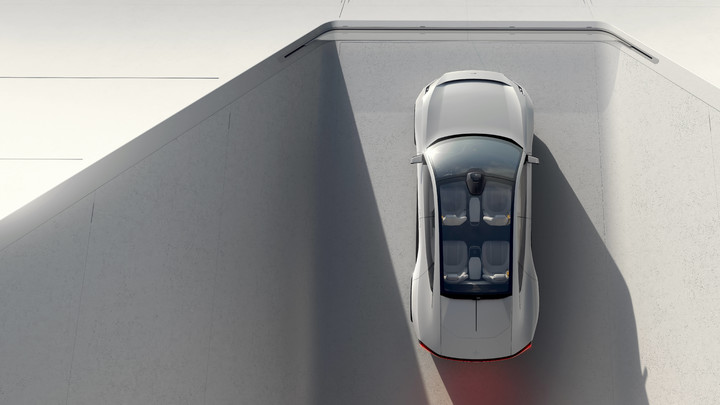
Polestar Precept positioned 4-door GT sedan. The low center of gravity of the electric vehicle contributed to the natural low-profile posture of the car. The sides of the body were recessed with sculptural lines, both in terms of body proportions and aerodynamic design. Can’t help but wonder about the performance of this machine.

Jixing always remembers its identity as a high-performance electric vehicle. Take aerodynamics as an example. In order to accelerate the flow of air on the cabin lid, Precept deliberately added a baffle to the lid.
As a four-door car, the 3.1-meter wheelbase can accommodate more batteries and provide more room for passengers in the car. The front face of the car officially throws away the traditional air grille and is replaced by a transparent panel. The designer calls it SmartZone, which integrates two radar sensors and a high-definition camera.
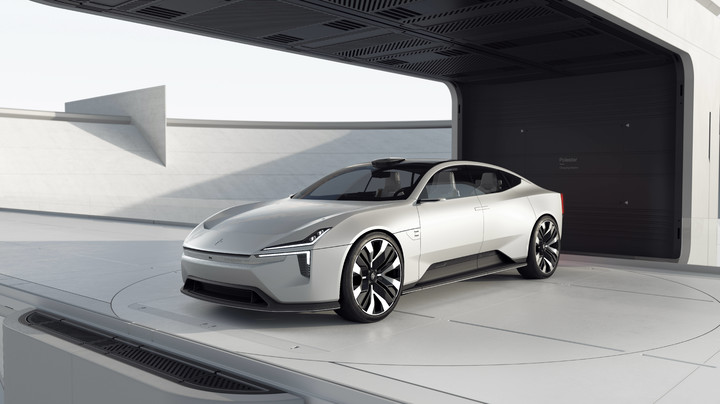
Lidar is also integrated on the upper edge of the front windshield, and all hardware sensors on the body are preparing for high-level automatic driving assistance.
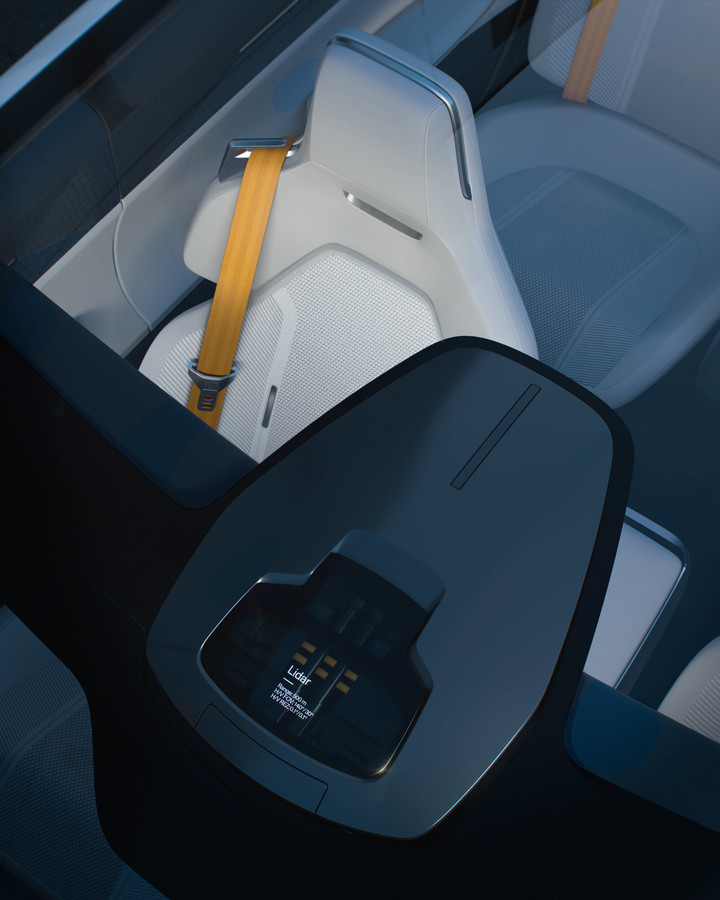
Regardless of the level of hardware, Polestar designers have achieved a perfect fusion of sensor and body design. How to incorporate the swollen lidar into the body without being obtrusive has always been a headache. The protruding hardware is unbearable for patients with obsessive-compulsive disorder. At present, the design of Polestar Precept is the industry’s most “look-resistant” solution.
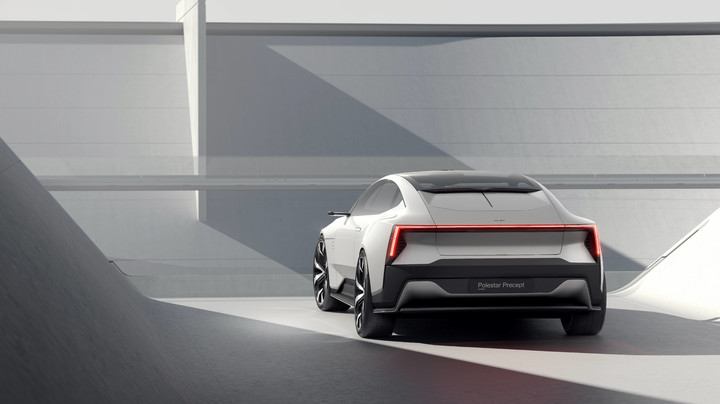
The biggest feature that distinguishes the vehicle design from Volvo is the headlights. Precept no longer copies the Thor’s hammer headlights, but upgrades and evolves on this basis. The headlights are separated into two parts, and the shape of the lamps is sharper. streamline. The rear is a penetrating taillight, which is still sharp and simpler than the taillights of the Polestar 1 and Polestar 2.
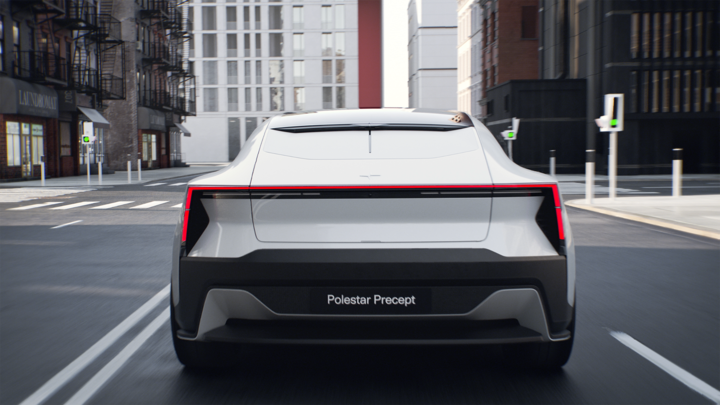
Following the trend, Polestar Precept has also eliminated the traditional exterior mirrors. Contemporary designers firmly believe that the camera can see more and more clearly than physical mirrors, and at the same time can reduce certain wind resistance. Consistent with the exterior of the car, the interior mirrors are also completely electronically replaced by streaming media. Two wide-angle cameras outside the car can clearly transmit images into the car.
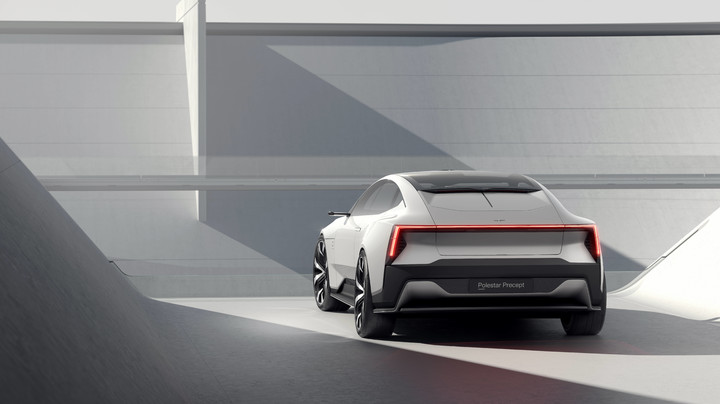
In terms of luxurious understanding, Volvo ’s polar stars have always had unique insights. Traditional car manufacturers believe that peach, leather, and chrome are the three elements of luxury, and polar stars who think of another way think that environmentally friendly materials can also create a different texture.
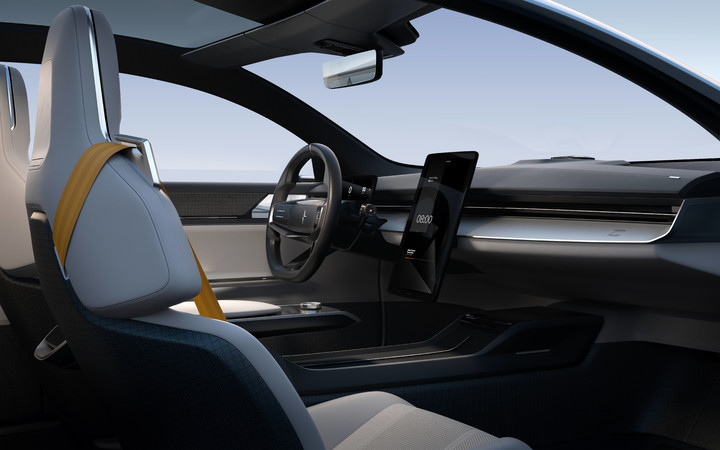
Polestar Precept’s seat uses the 3D flying line technology applied on high-end sneakers. The fiber used in the seat is derived from recyclable PET plastic bottles, the lining and headrest are made of recyclable softwood fiber, and the carpet is sourced. Self-recycling fishing nets.
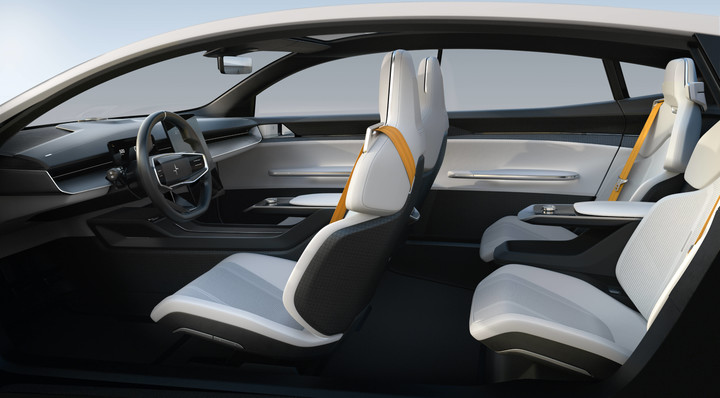
The natural linen fiber composite material developed by Polestar and Bcomp. This material is used in Precept’s interior panels and seat back panels. 80% less plastic is used, so you can hardly see any plastic parts. . The benefits of doing so are not just as simple as environmental protection. The most important thing is that it can bring a direct weight reduction effect to the vehicle. It is said that it can reduce weight by up to 50% compared to traditional interior parts.
After using the 3D flying wire technology in the interior, the problem of scraps can be effectively controlled. In the matter of environmental protection, Polestar has shown full obsessive-compulsive disorder. It’s not expensive but it is very high, and at the same time it must not be wasted.
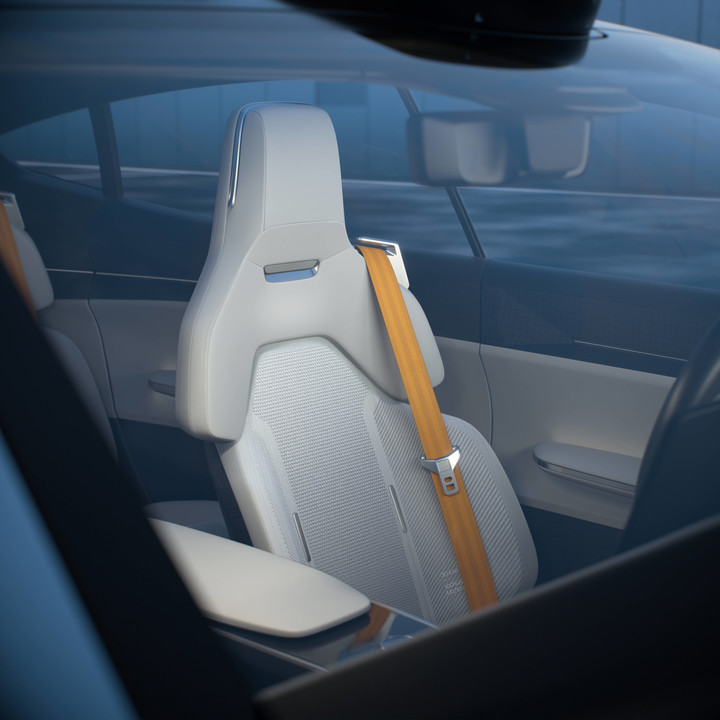
As you know, Polarstar is the first brand to mass-produce the native Android OS to the car. Based on the 15-inch central control touch screen and the 12.5-inch instrument, this car-machine system has more Interaction is possible. By integrating sensors in the car, the system can rely on gaze tracking technology and distance sensing to sense the user’s behavior in real time. When you focus on the screen, the brightness is automatically increased and the content is enlarged, otherwise the light is lowered to avoid affecting your attention.
If you are a screen-obsessed patient or you often have the habit of driving away, the system will also intervene in time to remind you to stay focused or take a break in time.
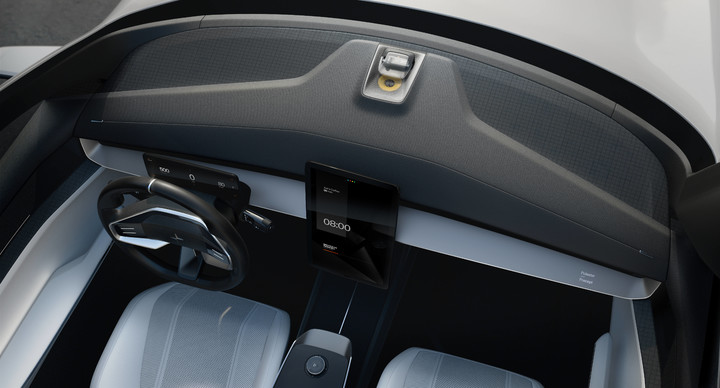
For well-known reasons, it ’s difficult to get the ultimate experience of Andriod’s native car OS in China. This is also the localization of Polestar. With the mass production delivery of Polestar 2, this system will officially accept the market Inspection.
The birth of Polestar Precept means that Polestar is starting again, trying to get rid of Volvo’s shadow, and setting a clear design tone for Polestar’s future products. Based on this model, Jixing is becoming a truly independent brand.